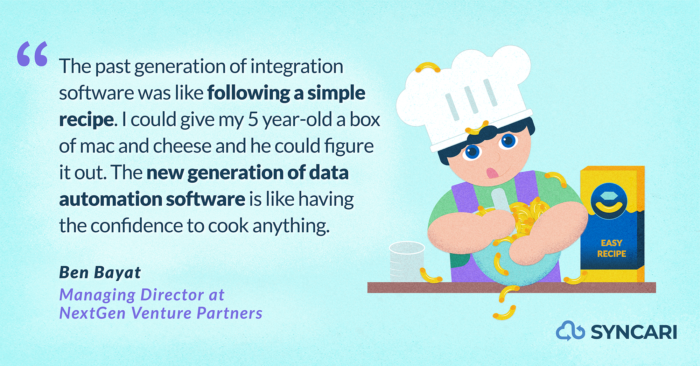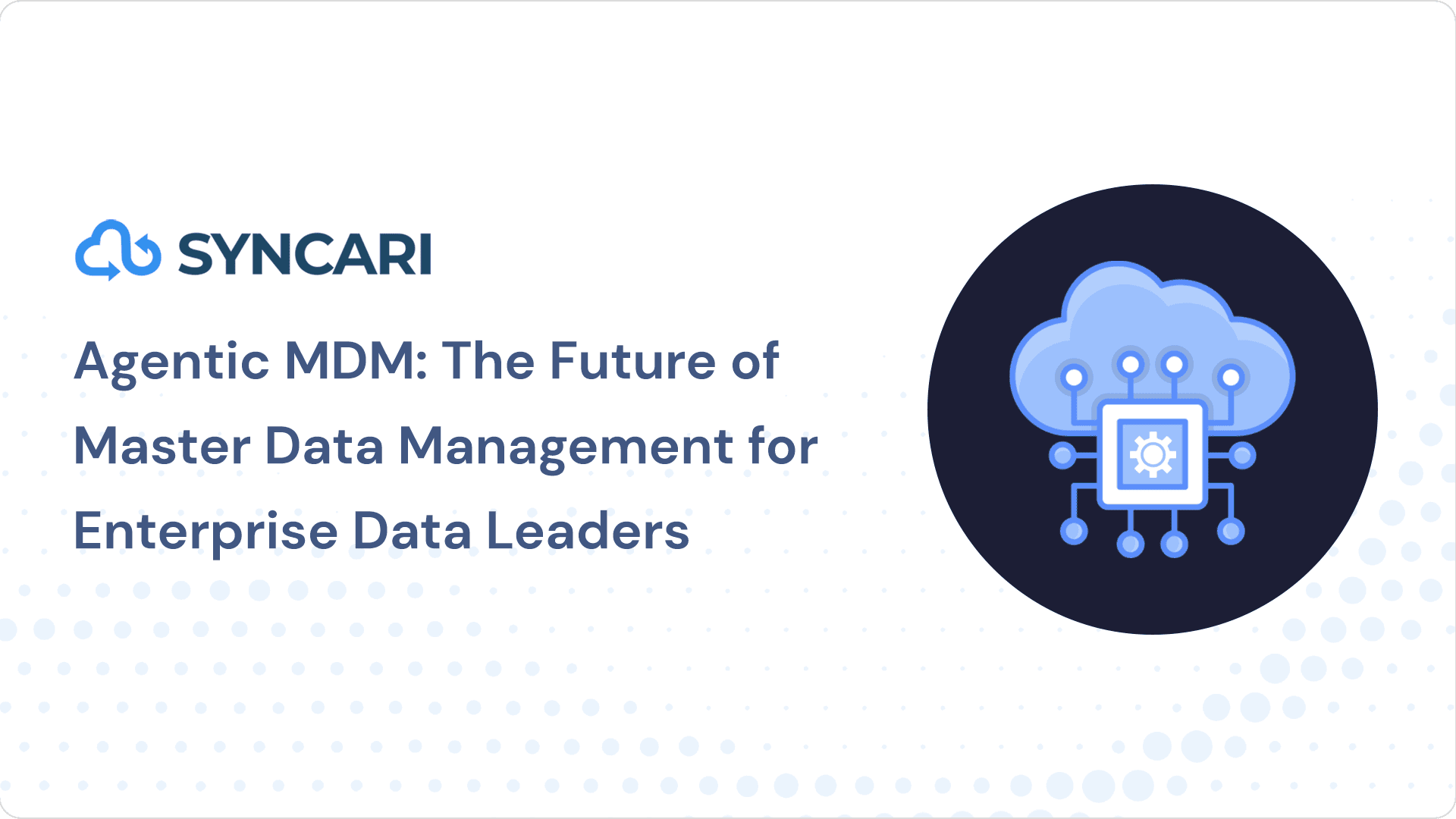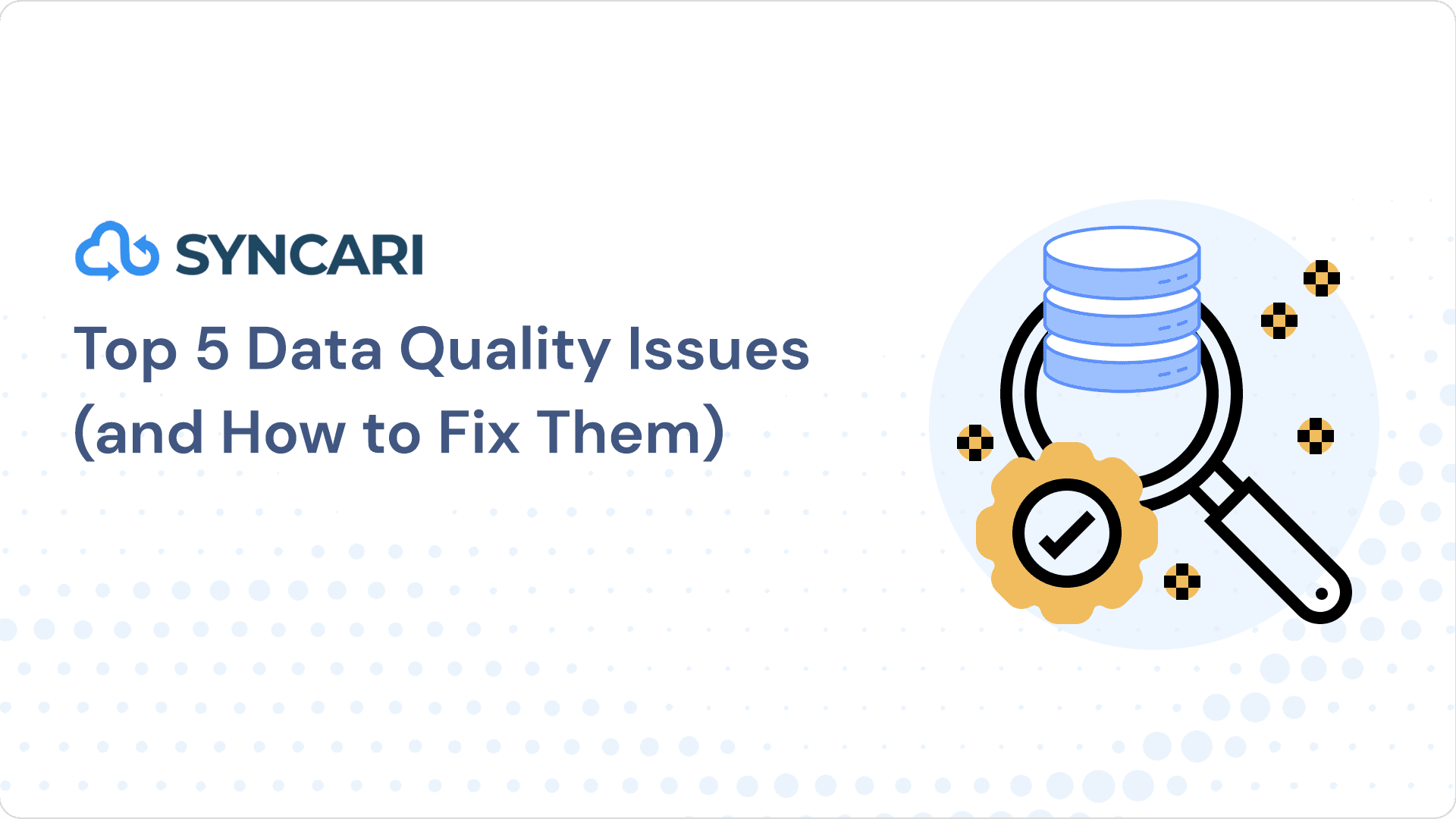On November 4, 2020, Emily Harrington became the first female climber to scale El Capitan in under 24 hours. As she achieved this record-breaking feat, she repeated a mantra to herself: “Slow is smooth. Smooth is fast.” According to Ben Bayat, Managing Director at NextGen Venture Partners, today’s sales leaders would be wise to heed these words. Especially when tackling their own mountains with data automation.
“Rev ops leaders are hammered with solutions. They are completely oversold,” says Ben, who himself used to be a sales leader. “When you’re so singularly focused on hitting a quota, everything else feels like noise. But stepping back to think about data quality automation for a minute would make everything smoother. And you’d attain revenue faster.” While he feels focus is necessary as a leader, too much of it can blind you to the possibilities for achieving that goal better.
In addition to being a sales leader, Ben spent over a decade as a data scientist at IBM before pivoting into investing, where he’s been backing Syncari since 2019. As an expert in enterprise data, he sat down with us to discuss a few things. First, how the data landscape is evolving. Second, why data automation solutions prevail where integration solutions fail. And lastly, how to contend with the perpetual tug-of-war between gut instincts and data.
Nick: How is the data quality space evolving?
Ben: Every emerging piece of technology goes through what Gartner calls a Hype Cycle. There’s an innovation trigger, followed by a peak of inflated expectations, then a trough of disillusionment, followed by an eventual mass adoption. In the data automation space, I think we’re past peak hype and just coming out of the trough of disillusionment. People are like, “I invested all of this money in my data infrastructure or my data team. Where’s my ROI?” I think a new generation of vendors are ushering in a period where they’re finally able to prove it.
Companies are waking up to the fact that data management is not simply a project that they invest in, but rather a core part of their infrastructure. Today instead of just the data team being concerned with data quality, the revenue leaders at the head of the pack care just as much about that data. A diverse spate of teams—including finance, human resources, operations, sales, marketing—each have data challenges holding them back from achieving their potential. These functions are finally owning it and seeking their own process and technology solutions to address these issues. Now these teams not only feel the responsibility to own data problems, but they also see the massive opportunity that lies on the other end of desiloing their data.
What catalyzed the shift to data now being in the hands of each department and also being the problem of each department?
Enterprise SaaS is probably the number one catalyst for that growth of data. Many departments have a technology stack that includes a dozen plus applications. And all of them are generating their own data set. Sometimes the degree of freedom and flexibility the tool affords you is decent, but often it’s not.
I think many people learned the lesson that they need to care about their departmental data the hard way. They’ve gone through the pain of adopting a CRM system and realizing, “Oh no, the CRM system is horrible. We want to move, but, oh my God, all of my data is trapped.”
These days, people know better. The sense of ownership they now feel means each time they make a new decision about buying an enterprise application, they are already thinking about the portability of the data that they’re going to create.
When people have been trapped before, it leaves them with scar tissue that reminds them that their data is actually the most valuable part of any tool. So you want to make sure that not only a piece of software has a workflow that is helpful, but that it leaves your data accessible and transformable.
And that’s the thing Syncari solves for—it’s a uniformly data-centric application across any number of different siloed datasets or enterprise applications. Syncari liberates your data. And I think that’s really powerful.
What’s the difference between traditional integration software and newer data automation platforms like Syncari?
I think past integration software saw some successes, but they were very narrow and use case specific. Syncari is the difference between cooking by a recipe versus knowing how to cook. Consider if I give my five-year-old a mac and cheese recipe. As long as they follow the steps, boil the noodles, put a little bit of butter and milk, it’s going to wind up fine. But if anything unexpected happens in the process, it’ll be a disaster. That’s what traditional integration software is like.

Syncari helps you know that, in any application, the output on the data side is going to be fine. In prior generations, “data automation” was all about brute force. None of them have really been adaptable or transformable. You’re just trying to string together a series of functions from point A to point B. Syncari flips that on its head and says, “Let’s imagine that all of the data is fungible across all of our applications. How would we orchestrate that?”
How do you think B2B data will evolve in the next decade?
Companies that don’t invest in data automation now will be severely limited when AI inevitably becomes more entrenched in everyone’s underlying data set. AI/ML is going to become a predominant technology, and you have to train AI on a lot of data. Therefore if you’re limited to your own company’s data quality, then you’re limited as to how well you can adopt AI. We’re investing in technologies now that overcome a lot of the data transportability limitations today.
What’s something you believe that few other people do?
That almost all decisions are easy to make when you boil it down to first principles. I’ll give you an example. 2020 has been a really weird year, and it’d be so easy to get tripped up in any one of the 20 complete gut-punch things that have happened this year.
But I have not lost my job during a crazy economic time period. My family has been very fortunate not to have contracted COVID, and our house hasn’t burned down during a historic fire season in California. So first principles, 2020 is a good year. But if I abstracted up to think about all of these other things that have happened, it might have obscured what is most essential.
Once you boil something down to its most simple element, the answer is often a lot clearer. The challenge is in reducing the signal from the noise. I find that in data, in business, and in life that we tend to mull over the minutiae of a decision, but it makes the answer less and less obvious.
What’s your approach to balancing data-driven decisions with trusting your gut?
I find this debate very interesting philosophically because I think there are revenue leaders who have been very successful sellers prior to any sort of data-based selling. But then there are people that kind of swing too heavily into completely data native that lose the human element.
Ultimately, the marriage between both gut feeling and data is so important. I’ll elaborate.
The human element of data-driven decisions
There’s such a human element in almost every type of decision-making. Sales reps sell the person. I invest in the person. And data has not yet figured out how to predict people. So you need to use your gut feelings as an important guide. But sometimes you can lean too far into that direction and that’s where data automation can keep the human decision honest, especially if you’re looking at a person through rose-colored glasses. For example, when you work on a deal so long, you get close to people and it’s very easy to assume it’s definitely going to happen. But if you look carefully at the data, it may or may not confirm your hunch.
But you also need to be wary of consuming too much data because there is a never ending well of data to continue to mine. Sometimes I find that if you just are constantly asking for more data the reality is that you actually don’t want to do what it is, and you’re trying to stall the inevitable. If I’m considering an investment and I just keep asking for more and more data, I’ve realized I probably don’t want to do the deal. But I may also not want to step away from it yet.
But conversely, I also know that sometimes I really want to do a deal and I don’t want to see data that might tell me not to. There is a saturation point of value for data, and you have to find that threshold that says, “Oh, okay. I have a sufficient amount of data to make a well-informed decision.” The wisdom to discern this point is the tricky part, but if you can master it then it will be what will set you apart as a leader.


